Earlier this spring, I had the chance to participate in a panel on “Volatile Materials: The Politics of Media Archaeology” at the 2015 conference of the Society for Cinema and Media Studies in Montreal. The panel, organized by Matthew Stoddard and featuring talks by Matthew, Catherine Russell, and myself, with a response by Will Straw, brought together some really interesting resonances around found material, old media, and the politics of the archive, and the conversation afterwards was really useful and challenging (I’m imagining a partial sequel panel for SCMS 2016, but more on that another time…).
A few folks have expressed interest in my talk since the conference, and since it’s not (yet) part of any larger project, I’m posting it here for anyone interested — I realize this is well after the fact, but given that the talk itself is on anachrony as an artistic and political force, I’m figuring that’s ok. The full text and slides are below, virtually unchanged as yet from my original format for verbal delivery. Enjoy, and let me know what you think in the comments or via email or Twitter!
Afrofuturist Anachrony: Rammellzee Excavates the Alphabet
In the beginning of Postmodernism, Fredric Jameson famously describes postmodern cultural experience as “dominated by categories of space rather than by categories of time, as in the preceding period of high modernism.” As much as I value Jameson’s project within Postmodernity as a whole—in one way or another, directly or indirectly, he’s a large part of the reason that many of us are sitting here today—I’ve nonetheless always felt that there are two problems with this specific formulation: on one hand, the binary sense of this rift, or break, from one epoch to another. But also, more specifically, the particular emphasis on space itself. Jameson’s discussion of space is valuable and valid, but postmodernity has for me always been embodied by, even perhaps synonymous with, hiphop, and hiphop has always been fundamentally about time.
Time is perhaps most visibly at stake in the genre’s early incarnations in the 1980s and 1990s. In the postindustrial economy that dominated this period, hiphop made clear that time was out of joint, that it was, in the words of Nas, illmatic—
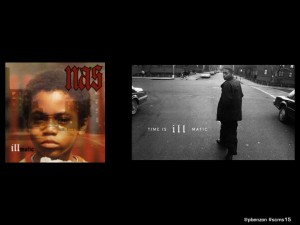
that it had, in many ways, run out.
So I want to suggest as a kind of governing principle for my talk today that hiphop has been from its outset a media archaeological form—a kind of critical time machine, to use Jussi Parikka’s terms, a means of troubling temporality in order to trace alternate narratives of Black Atlantic experience, of global modernity, and of history altogether. There are two main ways to frame this kind of a media archaeological project. The first is the dominant narrative of hiphop as a kind of historical salvage machine that cracks open the past to reveal lost history—think here of the scratchy, dusty sampling of an old vinyl record,
of crate diggers combing the racks of thrift stores in search of obscure beats,
of the eternal return of James Brown’s lyrics: do it again, bring it back to the top…
And then there’s the counternarrative of Afrofuturist hiphop. Afrofuturism is a broader crossmedia current of late-twentieth- and early twenty-first-century art and critical thought that seeks to situate the Afro-diasporic experience within the context of science fiction and futurity as a way of opening up new modes of subjectivity and social possibility. SLIDE Kodwo Eshun writes that Afrofuturism
is concerned with the possibilities for intervention within the dimension of the predictive, the projected, the proleptic, the envisioned, the virtual, the anticipatory and the future conditional. . . . Afrodiasporic subjects live the estrangement that science-fiction writers envision. Black existence and science fiction are one and the same.
People with literary backgrounds might think here of Octavia Butler or Sam Delany as exemplars of this kind of work,
or in terms of music, the interplanetary work of Sun Ra or Parliament Funkadelic—
and this approach has a long history in hiphop as well, everything from Afrika Baambaataa’s “Planet Rock” and the robotic movements of early breakers
to more recent artists like Jennelle Monae:
I want to talk today about perhaps the most radical Afrofuturist in hiphop culture, the MC, graffiti writer, philosopher, and theoretical physicist Rammellzee:
and I’ll talk a little bit about both his writing (his writing about writing, to be exact) and his sculptural work as a way opening up what his work with time has to tell us about the politics of media and of media archaeology as a critical and artistic method. Rammellzee’s iconography is largely futuristic, a kind of densely ornamented, bristling refiguration of the Japanized aesthetics of the 1980s to fit into the sensory overload of New York City. Yet this futurity is itself premised on a radically syncretic reconstruction of the past—what we might call, following Siegfried Zielinski, the deep time of the letter. Rammellzee believed that the alphabet had been coopted in the early days of recorded history: originally watched over and protected by monks, it was seized by “ikonoklastic emperors” (3), resulting in a history of oppression in which the power of language was kept from common people as a means of control.
Or as he himself puts it in his manifesto “Iconic Treatise on Gothic Futurism: Assassin Knowledges of the Remanipulated Square Points, One to 720:”
From the fourth century to the nineteenth century a development of style remanipulated by monks known as Gothic type, or Old English type, presently used by The New York Times and Long Island Press. This is the PROTO- product of WILD-STYLING. To my knowledge of letter-structure, separation of sound (verbal recording) and word-formations English, Spanish and Russian, and any other Slanguages using Roman letter-symbols or others are not a language, due to universal symbolic thievery. The original verbal formation (phonetic) for the Roman letter was Latin: (L+AxT= IN). (2)
Rammellzee saw graffiti writing as a means of reclaiming and liberating the power of text, a crucial weapon—quite literally—in a long-running historical battle around the politics of inscription. He believed his style of graffiti writing, “Ikonoklast Panzerism,” would liberate and arm the letter to do battle against the forces of oppression and control.
Above you see his drawn examples of what he saw as the three evolutionary styles of graffiti, three different versions of E: bomberism, which has some elements of militarized adornment but is still largely rounded and organic and bubbly, wild stylism, which is more technologized, more complex, and more adorned, and finally Ikonoklast Panzerism, which is considerably more densely adorned and multidirectional, almost to the point of obscuring what we would understand to be the defining characteristics of an alphabetic character. Even the very terms he uses to name this theory and describe the style of his writing—Gothic Futurism and Ikonoklast Panzerism, respectively—make clear the historical sedimentations he’s tracing through the alphabet: the literal Gothic writing of monastic times,
the Gothic Fraktur typeface associated (however accurately or inaccurately) with Nazi propaganda,
the German Panzer tank (as I’ll show in a moment, the tank was an important vehicle for Rammellzee, a figure of textual and military mobilization)—
even his own name, resonant of the German tank commander Erwin Rommel.
Allusions, modes, mediums, all pile up in Rammellzee’s dense, disjunctive writing—this is not a postmodern retro aesthetic, not a singular nostalgia for a different techniological epoch, but rather the vision of an unevenly stratified timescape, across which letters circulate as profoundly, politically material objects.
For example, offering a visual definition of the letter A, he writes, “Capitol energy houser constructor (finance) formation high bar strategy middle lane missile launcher uppercase falls once” (7). This verbal approximation of visual, typographical structure simultaneously evokes the formal characteristics of the capital A—its pyramidal “energy houser” structure, the “middle lane” of its horizontal bar, the way in which the angled path of its two main arms “falls once”—and also attributes a wide-ranging political import to these characteristics—the “[c]apitol” nature of this first letter, its power in forming finance (and thus controlling capital), the missile-launcher-like quality of the middle lane. This microscopically materialist philosophy of language builds on a wide range of precedents, including the typographic ornamentation of the letter in Celtic illuminated manuscripts (an ancestry cited by many graffiti writers),
the supreme alphabet of the Five-Percent Nation (an offshoot of the Nation of Islam), in which each letter of the Latin alphabet is equivalent to a concept from Islamic teachings,
perhaps the Cherokee syllabary devised in the early 19th century, in which each symbol represents an individual syllable within spoken Cherokee language.
But in layering so many different temporalities, historical and cultural moments, and sites of inscription into his thinking, Rammellzee renders it impossible to latch onto a singular lineage for the contemporary letter, impossible to fix its visuality, its materiality, its historicity—the archaeology of the letter becomes itself a kind of mythology, impossible to reconstruct for anyone but Rammellzee himself. Each letter, in turn, becomes a mobile, material weapon over and above being a signifier: as he says in his song “The Lecture,” “there are no pictograms here. What I draw is architecturally built and will fly.”
And indeed it did: these are Rammellzee’s Letter Racers, an extended project consisting of 52 spaceship-like cars mounted on skateboard decks, each signifying a specific letter of the alphabet. Here you see a few examples, the racers for letters Q, R, S, and T:
Again the aesthetic here is futuristic, robotic, but if we look more closely we see that the Letter Racers are constructed largely from trash, from the detritus of the urban landscape:
here on Letter Racer Z you can see a plastic buckle, an arrow shaped pen, several toy crowns or jewelry, and more than a few aerosol spray can tops. Rammellzee was meticulous and deeply intentional about collecting the materials for these and other sculptural pieces—there’s a depth of process here that’s equally important to the finished products.
The image above is of his home studio—when we think about the extremity of the archive, the overload, that’s at play here, Rammellzee’s archaeological work starts to take on another layer, another dimension. This is a curation of the past to the point of excess, precisely for the purposes of gaining critical purchase on the future, for imagining how letters might do battle. Looking at this image, I can’t help but think of Homer and Langley Collyer, SLIDE the brothers whose New York apartment was seized by the authorities after their deaths in 1947 and was found to contain 130 tons of material that they had collected from the streets of New York over some 30 years.
It would be easy to call these practices hoarding, but I think that there’s something more at stake here. Rammellzee’s widow, Carmela Zagari, has said that in the last years of his life, he “buil[t] her out of house and home,” but that “[h]e wasn’t a hoarder . . . he kept on finding all of this great garbage on the streets of New York that he would keep and categorize. He knew exactly which thing was going to go where, even if it was for a piece he wasn’t going to make for another year.” Aside from the simple fact that the discourse of hoarding is a pejorative, arbitrary construct to begin with, the specificity that Zagari sheds on Rammellzee’s art in particular makes clear how fundamentally all of his work is concerned with the refiguring of materiality and time, with the writing of a new history through a new history of writing.
If Rammellzee’s work is a critical time machine, where and when does it go? In taking up this larger question, it’s worth noting that he defines his aesthetic as Gothic futurism, as opposed to Afrofuturism—that’s a deliberate, explicit shift in coordinates, one that’s definitely cultural, but also simultaneously historiographic. Rammellzee resisted the label of Afrofuturist for his work, and moreover rejected the term altogether, as well as any larger sense of black essentialism, conventional or otherwise. To put this position in temporal terms, he was postblack decades before the term existed in broad circulation—but not (or at least not only) because of his own heritage, which included Native American and Italian as well as African ancestry (Miller 59). Whatever we might say about the viability of postblack identity in the present moment, claiming such an identity in response to the conditions of that moment is radically different from claiming it because you are the spiritual descendant of medieval monks who is capable of seeing into the twenty-second century.
As such a position suggests, Rammellzee’s media archaeology layers the past in order to look radically towards the future, imagining a conception of time that is, to borrow Parikka’s terms, non-human, multiple, and “pleated,” spreading in all directions (146). To put it in Rammellzee’s own terms, this time is “before the future and after the past. The style we rock is ikonoklast”—rationally speaking, that moment seems to add up to the present—but it is a present that is newly different, alien, molecularly broken and broken down: an uncanny layering and reverberation that battles within the earthly time of the late-twentieth-century west, but not of it.
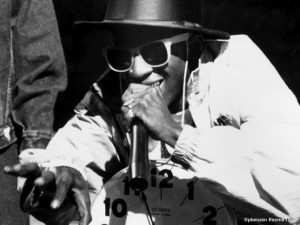
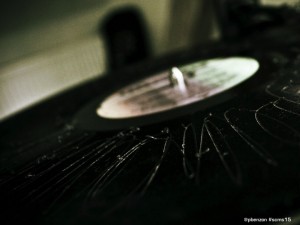
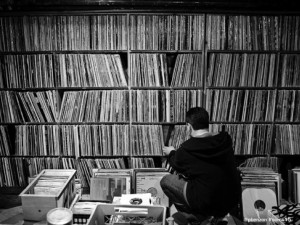
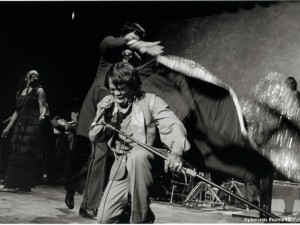
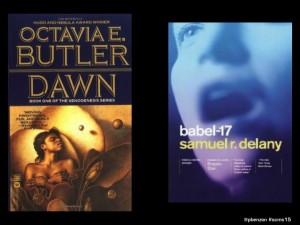
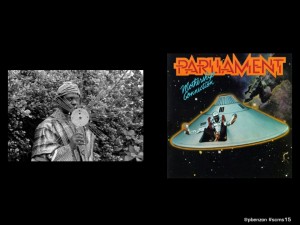





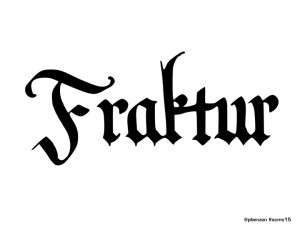
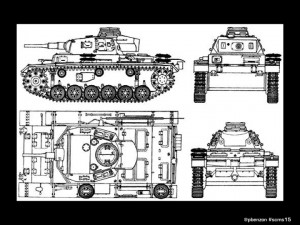

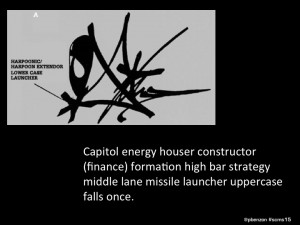
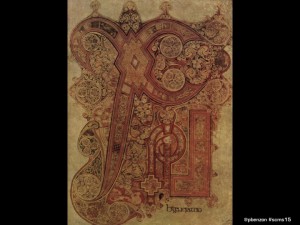

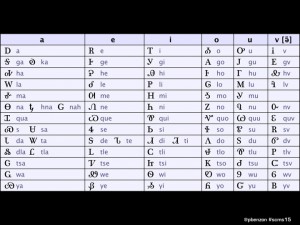
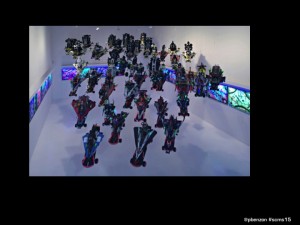
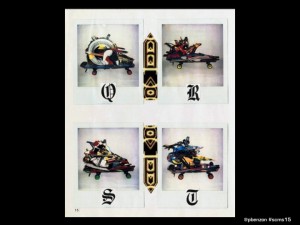
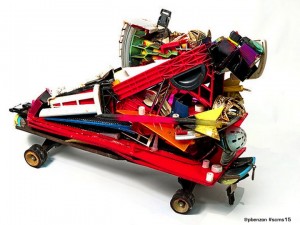
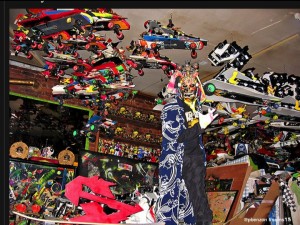
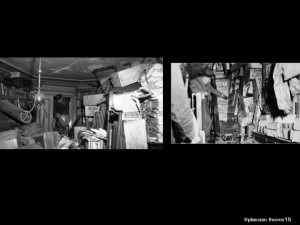
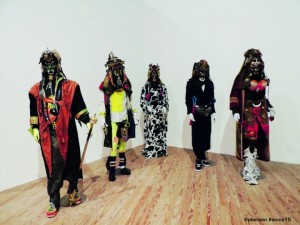
Sorry, the comment form is closed at this time.